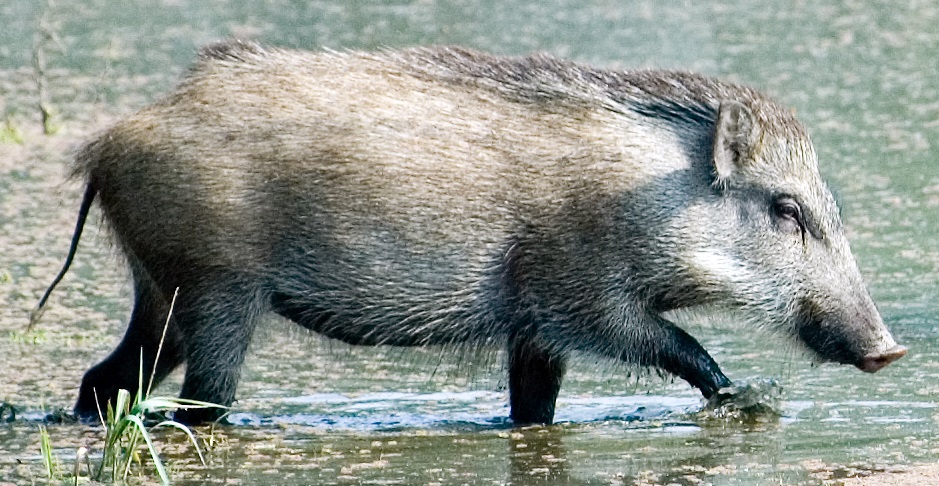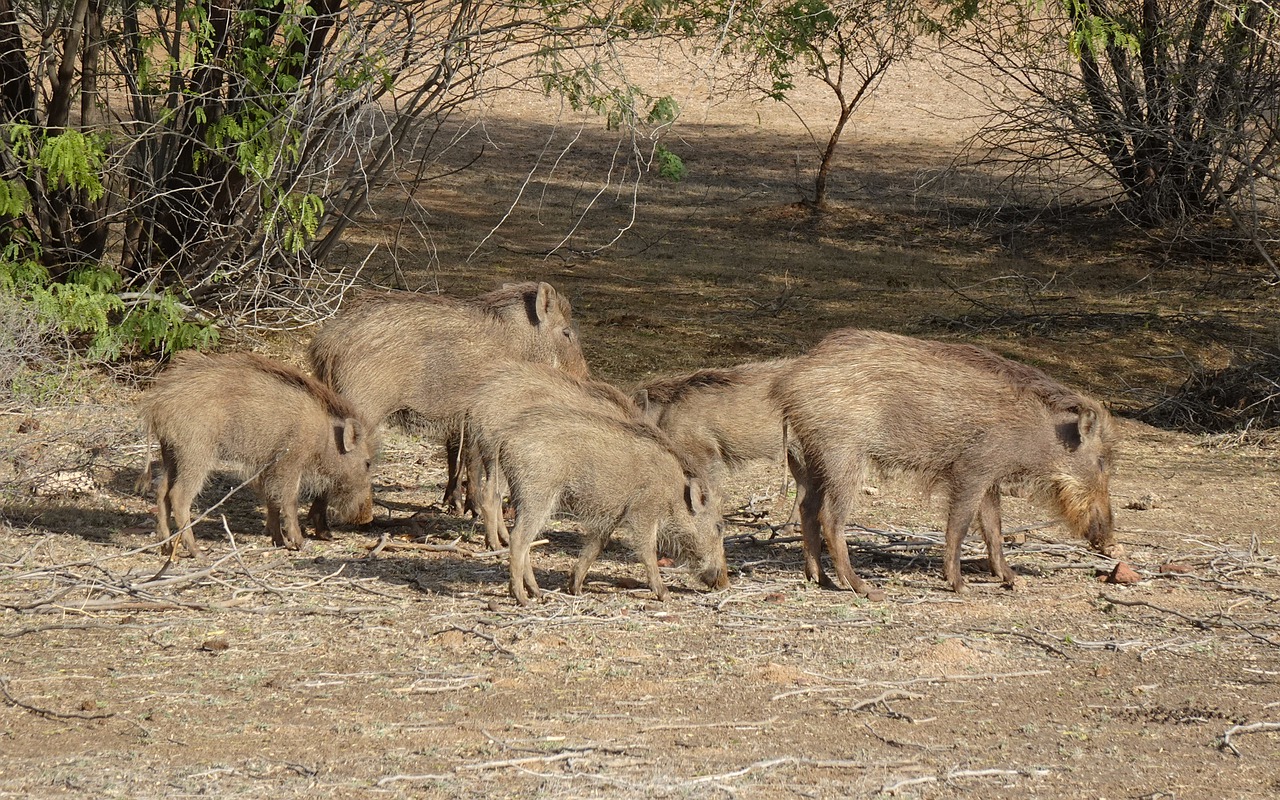Feral Swine

Feral Swine
(Sus scrofa )
Tags: Terrestrial
Identification and Reproduction
Identification:
- Feral swine, also known as wild pig, appear very similar to domesticated pigs.
- Widely range in size, weight, and colour.
- They can weigh from 150-600 lbs, much larger than the wild pigs in their native range.
- Males have sharp white tusks.
- Coat is bristly and thick. Colour will range from grey, brown, black or white (rarely), and coating pattern may vary.
- Tails have short hairs extending at the tip.
Reproduction:
- Feral swine reproduce very quickly.
- Females can give birth to 6-10 piglets per litter and can reproduce several times in a year.
- These animals reach sexual maturity very quickly; females as early as 5-8 months old.
Habitat & Ecology
- Feral swine are very adaptive and can live in a variety of habitat types.
- They are only restricted by snow as this limits their access to water and ability to forage.
- These pigs travel in groups, often found in riparian areas with a water supply.
- Their range continues to extend.
- Their lifespan ranges from 15 to 25 years.
- Male feral swine tend to be solitary outside of the breeding season.
- They are also known as fast runners and capable swimmers.
Impacts
- Feral swine are very distructive and destroy crops and property.
- Can prey on livestock such as goats and sheep.
- May carry and spread diseases and parasites that can affect local livestock and wildlife.
- They can dig tree roots and rub off bark, damaging ecosystems.
- They create wallows or mud pits that alter pond and wetland systems.
- Feral swine displace wildlife and harass livestock.
- They compete with wildlife for food.
- They predate on reptiles, bird eggs and small mammals.
- Feral swine have also been known to create above ground shelters, termed "pigloos" during the winter. Pigloos are mounds of snow where the wild pigs have burrowed and created a shelter.
Management
- Prevention is key for this invasive species.
- Do not leave out garbage or any potential food source outside.
- Ensure fence system is in place to protect livestock and consistently monitor livestock.
- Do not release feral swine.
- It is legal for anyone with a hunting license to hunt feral swine.
- Report any feral swine sightings.
Resources
Download the BC Invasive Species Alert of Feral Pigs here.
For more infomation refer to the Invasive Species Compendium on Sus scrofa (Feral pig).
Header photo (Richard Bartz).




